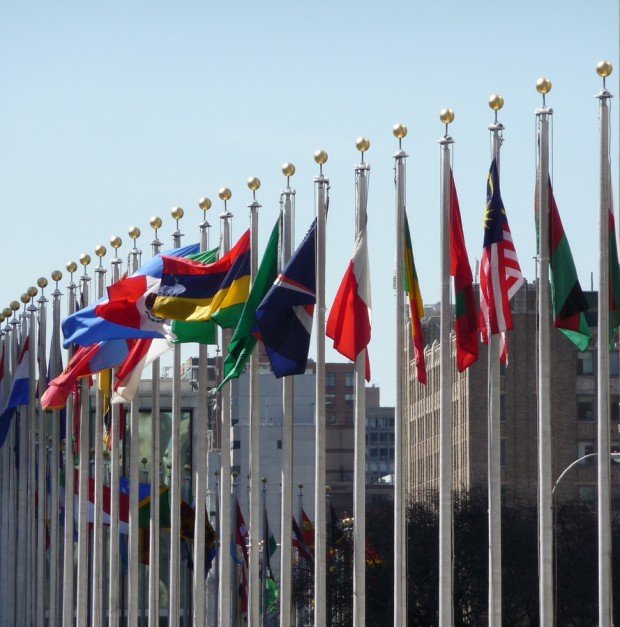The United States on Wednesday submitted to the United Nations its vision for a new international climate agreement that is “built to last,” outlining what it thinks should be the main elements of a climate deal to be agreed upon in Paris in 2015.
The U.S. delegation was the first to share its ideas for what the 2015 climate deal could look like, and made clear that a future framework should not use the “bifurcated approach” of the 1997 Kyoto protocol, which placed different burdens on developed and developing countries to reduce pollution.
Governments of over 190 countries agreed last year that a new deal would consist of a patchwork of national contributions to curb emissions that would blur the 20-year-old distinction between the obligations of rich and poor nations.
The United States said it wants the new framework to be more nimble than its predecessor so that amendments to the agreement do not require consensus-based support, which in the past has repeatedly bogged down negotiations.
That deal, if concluded, would require all governments to set new targets to drive down their emissions after the year 2020, and hold countries like the United States, Japan and nations of the EU to the same legal requirements of China, India and other fast-growing developing countries.
“There have been, and will continue to be, dramatic and dynamic shifts in countries’ emissions and economic profiles that make such an approach untenable, environmentally and otherwise,” the United States’ submission said.
Alden Meyer, director of strategy and policy for the Union of Concerned Scientists and veteran observer of the UN talks, said the United States has taken a lead in sharing its post-2020 vision since it has been the main champion of a UN deal that centers around separate national strategies rather than a common binding target.
“The U.S. is staking out fairly firm stuff that they want to see,” he said. “All the major countries, including China, India and Brazil, are expected to be fairly transparent and detailed. That is the clear reading from this.”
Among the requirements envisioned by the United States for countries’ “contributions” to the global pact are that they conform to a common timeframe with other countries, and be specific, quantified and quantifiable.
The national plans submitted to the United Nations should specify details such as what the base year for emissions reductions will be, what greenhouse gases and sectors are covered under the plan and what percentage of overall emissions will be targeted, according to the U.S. proposal.
Annie Petsonk, international counsel to the Environmental Defense Fund, said the United States is signaling that a new framework has to have “comparability” to ensure that countries’ plans stack up against each other and contribute appropriately to a common global goal.
Petsonk noted that the U.S. plan laid out a different approach to the legal nature of a future agreement that reflects the fact that a politically divided U.S. Congress is unlikely to approve any new international climate treaty.
Unlike the 1997 Kyoto protocol, in which the agreed treaty required ratification by Congress, the 2015 would instead rely on countries’ domestic authorities to enforce their contributions.
Petsonk said Wednesday’s U.S. plan was “an international counterpart” to President Barack Obama’s major speech on climate made in June 2013, when Obama laid out a strategy to reach the national goal of cutting greenhouse gas emissions 17 percent below 2005 levels by 2020.
French President Francois Hollande and Obama this week pledged to work together to ensure a successful outcome at the 2015 Paris climate talks.
“The only way we’re going to do that is if countries like the United States and France can over time come to a common position, and bring in countries like China and India as well,” a senior administration official said Tuesday.
Obama and other heads of state are expected to participate in a special climate summit at UN headquarters in September at the invitation of Secretary General Ban Ki-moon.
Some countries are expected to announce their national plans around the time of that summit.
The Obama administration has also quietly launched an interagency process to prepare a national goal to kick in after 2020, according to the publication Climatewire.
(Editing by Ros Krasny and Richard Chang)





















 Executives on the Move at Liberty Mutual, Cowbell, W. R. Berkley
Executives on the Move at Liberty Mutual, Cowbell, W. R. Berkley  What to Expect in 2026: U.S. P/C Results More Like 2024
What to Expect in 2026: U.S. P/C Results More Like 2024  Why the Middle Market Matters and How Insurers Can Capture It
Why the Middle Market Matters and How Insurers Can Capture It  NOAA Announces Latest AI-Driven Global Weather Models
NOAA Announces Latest AI-Driven Global Weather Models 





